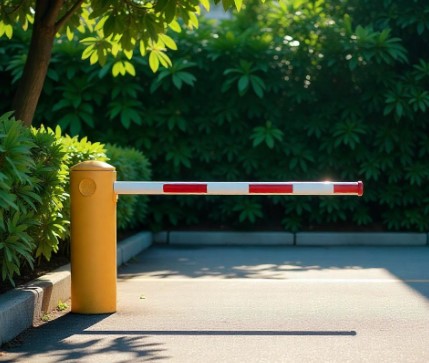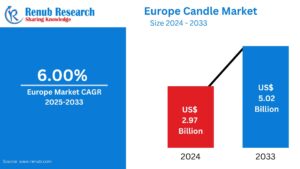In a city known for its seamless public infrastructure and efficient traffic systems, car parks must keep up. While public transport in Singapore sets global standards, car parks still face challenges with congestion, security, and outdated systems. These pain points have prompted a wave of upgrades across the island. The switch to car park barrier Singapore solutions built on smart systems shows a clear shift towards modernisation.
This article explores why traditional car park technology no longer meets the needs of drivers or developers. It also explains how new features, such as HID card reader software, help to solve daily problems while offering long-term gains. From smoother traffic to improved data tracking, these changes are shaping the future of parking in Singapore.
Why Traditional Barriers Fall Short?
Older car park systems rely on simple mechanical arms and printed tickets. They work, but only up to a point. As car volumes grow, the weaknesses become clear.
Common issues with outdated car park barriers:
- Slow entry and exit times
- Ticket jams that delay traffic
- Difficulty in managing large car parks
- Weak security for authorised users
- Limited or no data tracking
In Singapore’s dense urban landscape, these problems create ripple effects. A short queue at one exit can quickly build into a long delay. Over time, this affects customer satisfaction, traffic flow, and even property value.
The Push for Smarter Solutions
Singapore’s Smart Nation goals include improved mobility and digital solutions in daily life. Parking systems must evolve to match this vision. Upgrading to smarter, automated barrier systems solves practical problems and aligns with broader national goals.
The aim isn’t just to replace hardware but to redesign how car parks work. This includes sensors, cloud-linked systems, mobile integration, and flexible access controls. With smart features in place, facilities can move faster, handle more users, and collect useful data.
Key Features of Modern Car Park Barrier Systems
New car park barriers go far beyond the simple arm-and-ticket model. They link to software that manages access, tracks usage, and offers real-time updates. Let’s look at what sets these systems apart.
1. RFID and Card Reader Integration
Modern systems allow vehicles to enter without stopping. A car fitted with an RFID tag or access card triggers the gate automatically. HID card reader software plays a central role here, managing credentials and granting access securely.
This contactless entry:
- Speeds up vehicle flow
- Reduces queue build-up
- Limits physical contact (important for health safety)
Authorised users can enter with ease, while unauthorised ones get blocked. This boosts both convenience and security.
2. Real-Time Monitoring and Alerts
Smart systems offer live monitoring. Security teams and car park operators can track how many vehicles enter or exit, and when. Alerts trigger if something seems off—like repeated failed entries or prolonged gate openings.
These features:
- Improve operational awareness
- Help with traffic management
- Enable quick action in emergencies
Monitoring tools also make it easier to manage peak hours or special events.
3. License Plate Recognition
Many new systems use cameras that read vehicle plates. This removes the need for tickets or cards. The system checks the plate against a stored database and then opens the gate if the vehicle is approved.
Plate recognition:
- Cuts paper waste from printed tickets
- Speeds up return visits for regular users
- Tracks entry time for timed billing
This hands-free model suits shopping centres, business parks, and residential complexes.
The Role of HID Card Reader Software
HID card reader software manages access by linking users to their credentials. Each driver may have a physical card, mobile ID, or vehicle tag. The software reads this data, verifies it, and opens the gate.
It also:
- Stores access history for review
- Allows or blocks cards as needed
- Links with other building systems
When used across multiple sites, this system can centralise control. A single platform manages several car parks, making it ideal for property developers or facility managers.
Key Differences Between Traditional and Smart Barrier Systems
To help highlight the changes, here’s a comparison of the two system types.
| Feature | Traditional Barrier | Advanced Barrier System |
| Entry method | Ticket or manual card | RFID, plate recognition, app |
| Queue speed | Slower | Faster due to automation |
| Security level | Low | High with user validation |
| Access control | Fixed, basic | Customisable and remote |
| Data tracking | Minimal | Detailed logs and reports |
| Maintenance | Frequent jams or repairs | Fewer mechanical issues |
| System cost over time | Higher due to breakdowns | Lower through efficiency |
Advanced systems bring consistency and adaptability, key traits for a fast-moving city.
How These Upgrades Improve Daily Life?
The impact of better barrier systems reaches beyond the car park. They improve how people move, how buildings run, and how developers plan.
For Drivers:
- Quicker entry and exit, especially during rush hours
- Easier payment or no need for physical tickets
- Reduced wait times even in busy areas
For Property Owners:
- Better traffic flow means happier tenants or customers
- Accurate billing and reduced fraud
- Detailed reports for audits or future planning
For Urban Planners:
- Data-driven insights on parking usage
- Better coordination with nearby traffic systems
- Support for smart city goals
Integration with Other Systems
Modern barriers don’t work alone. They link with security cameras, visitor logs, mobile apps, and building access systems. This tight integration keeps everything in sync.
Some examples:
- Residents use the same pass to enter buildings and car parks
- Visitors get digital codes that expire after use
- Guards receive real-time alerts when unusual access occurs
These setups remove the need for separate cards or keys.
Privacy and Security Concerns
Smart systems collect data. This raises valid concerns about privacy and control. To manage this well, operators must set clear policies.
Best practices include:
- Encrypting user credentials
- Regularly updating software
- Limiting data access to trained staff
- Allowing users to review or delete their information
When used with care, smart systems offer more safety, not less.
Challenges in the Transition
Upgrading systems doesn’t happen overnight. Property owners face real hurdles, including:
- High initial costs
- Staff retraining
- Technical glitches during setup
Still, many have found that the long-term gains outweigh the short-term pains. Most providers now offer phased rollouts or hybrid models that allow both old and new systems to run together during the change.
What This Means for the Future?
Singapore’s approach to urban planning values precision, speed, and forward-thinking. Upgrading car park barrier Singapore solutions to smart models fits this outlook perfectly.
In the years ahead, we may see:
- Full mobile integration for parking access
- Auto-payment linked to bank apps or digital wallets
- Parking spaces that talk to vehicles in real-time
As smart vehicles become more common, the barrier system must adapt. New software will play a growing role, and tools like HID card reader software will become more deeply embedded in daily life.
Final Thoughts
Car parks seem simple—just gates, lines, and spaces. But beneath that surface lies a complex system. Singapore’s shift towards smart barriers reflects a bigger change in how cities think, plan, and grow.
Better systems make daily life smoother. They support security, cut delays, and give teams the tools they need to manage space wisely. With the help of strong access tools like HID card reader software, even the humble barrier becomes part of a smarter, faster, and more connected Singapore.






